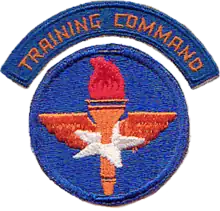Bruce Campbell Field
Bruce Campbell Field (IATA: DXE, ICAO: KMBO, FAA LID: MBO) is a city-owned public-use airport located two nautical miles (4 km) southeast of the central business district of Madison, a city in Madison County, Mississippi, United States.[1] This airport is included in the National Plan of Integrated Airport Systems for 2011–2015, which categorized it as a general aviation airport.[2]
Bruce Campbell Field (former Augustine Auxiliary Field) | |||||||||||
|---|---|---|---|---|---|---|---|---|---|---|---|
 USGS 2006 orthophoto | |||||||||||
| Summary | |||||||||||
| Airport type | Public | ||||||||||
| Owner | City of Madison | ||||||||||
| Serves | Madison, Mississippi | ||||||||||
| Elevation AMSL | 326 ft / 99 m | ||||||||||
| Coordinates | 32°26′19″N 090°06′11″W | ||||||||||
| Map | |||||||||||
 MBO Location of airport in Mississippi | |||||||||||
| Runways | |||||||||||
| |||||||||||
| Statistics (2011) | |||||||||||
| |||||||||||
Although many U.S. airports use the same three-letter location identifier for the FAA and IATA, this airport is assigned MBO by the FAA,[1] and DXE from IATA[3] (which assigned MBO to Mamburao Airport in the Philippines).[4]
Facilities and aircraft
Bruce Campbell Field covers an area of 260 acres (105 ha) at an elevation of 326 feet (99 m) above mean sea level. It has one runway designated 17/35 with an asphalt surface measuring 4,444 by 75 feet (1,355 x 23 m).[1]
For the 12-month period ending April 14, 2011, the airport had 48,660 aircraft operations, an average of 133 per day: 99.8% general aviation and 0.2% military. At that time there were 63 aircraft based at this airport: 87% single-engine, and 13% multi-engine.[1]
History
The airport was opened in March 1941 as Augustine Auxiliary Field with an all-direction 4,000' turf takeoff/landing field. single 3,600' concrete runway. It began training United States Army Air Corps flying cadets under contract to Mississippi Institute of Aeronautics, Inc. The airport was assigned to Southeast Training Center (later Eastern Flying Training Command) as a primary (level 1) pilot training airfield, reporting to Jackson Army Air Base. The airfield had three local auxiliary airfields for emergency and overflow landings. Flying training was performed with Fairchild PT-19s as the primary trainer and also had several PT-17 Stearmans assigned.
The airfield was deactivated on June 30, 194? with the drawdown of AAFTC's pilot training program. It was declared surplus and turned over to the Army Corps of Engineers on September 30, 1945, and was eventually discharged to the War Assets Administration (WAA) and became a civil airport. [5] [6] [7]
See also
References
- FAA Airport Form 5010 for MBO PDF. Federal Aviation Administration. Effective August 25, 2011.
- "2011–2015 NPIAS Report, Appendix A (PDF, 2.03 MB)" (PDF). National Plan of Integrated Airport Systems. Federal Aviation Administration. October 4, 2010. Archived from the original (PDF) on 2012-09-27.
- "Bruce Campbell Field (ICAO: KMBO, FAA: MBO, IATA: DXE)". Great Circle Mapper. Retrieved April 24, 2012.
- "Mamburao Airport (IATA: MBO, ICAO: RPUM)". Aviation Safety Network. Retrieved April 24, 2012.
-
 This article incorporates public domain material from the Air Force Historical Research Agency website http://www.afhra.af.mil/.
This article incorporates public domain material from the Air Force Historical Research Agency website http://www.afhra.af.mil/. - Shaw, Frederick J. (2004), Locating Air Force Base Sites History’s Legacy, Air Force History and Museums Program, United States Air Force, Washington DC, 2004.
- Manning, Thomas A. (2005), History of Air Education and Training Command, 1942–2002. Office of History and Research, Headquarters, AETC, Randolph AFB, Texas ASIN: B000NYX3PC
External links
- Madison Air Center, the fixed-base operator (FBO)
- Aerial image as of February 1996 from USGS The National Map
- FAA Terminal Procedures for MBO, effective January 28, 2021
- Resources for this airport:
- FAA airport information for MBO
- AirNav airport information for KMBO
- FlightAware airport information and live flight tracker
- SkyVector aeronautical chart for KMBO

